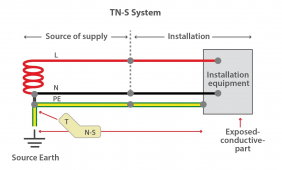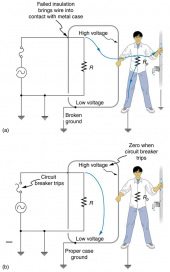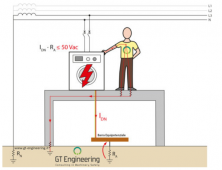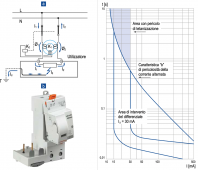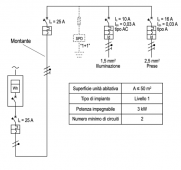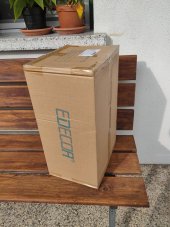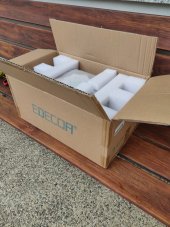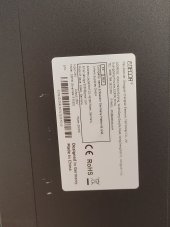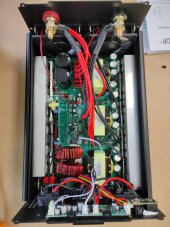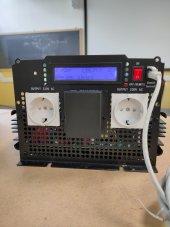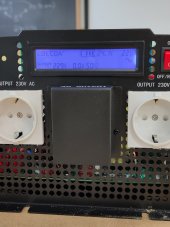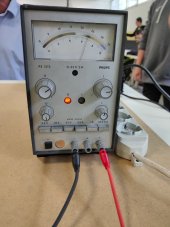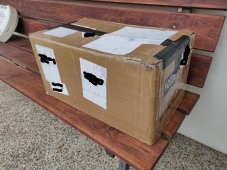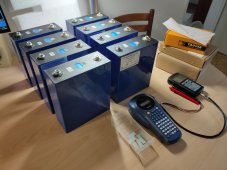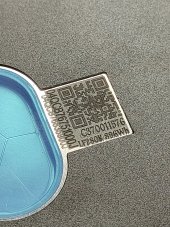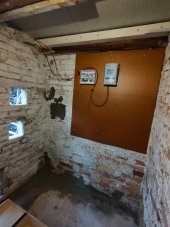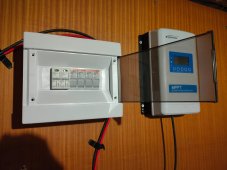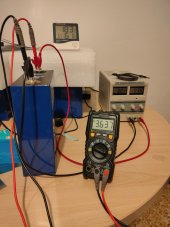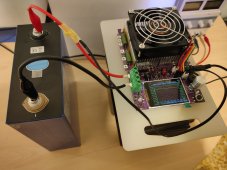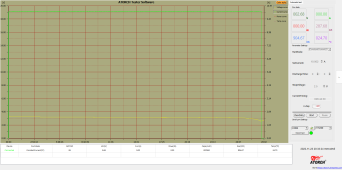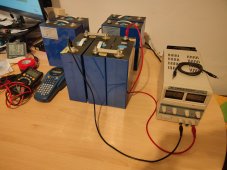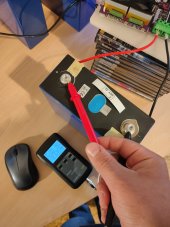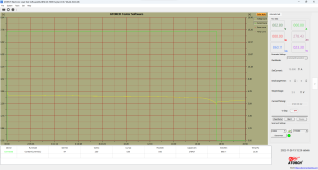perryfranz
New Member
- Joined
- Aug 31, 2022
- Messages
- 39
Hi everyone!
I'm building my first offgrid system here in Italy trying to mantain at the lowest all the cost without sacrifice security and quality overall.
What I have:
- 4 jinko solar JKM240P-60 240W (55€ -54$ each)
- 1 EPever MPPT XTRA4415N (200€ - 197$)
What I have to buy:
- 24V 3500W Edecoa inverter (~390€ - 384$)
- 24V 280Ah DIY battery+BMS (in evaluation)
- Test equipement to test the cell (to be defined)
Define the context :
in my house I have already an ongrid 3Kw sistem without battery (legally I cannot touch the system or modify it, I have to do many paper and spend lot of time to do it... Italian burocracy...) but with the electricity cost increasing now it's pricy charging my "125cc" electric scooter that I use to ride home-work and I need to charge it up every 3-4 days (it takes 3kWh), not so much but I can only charge it during night paying 4 times the price for kWh that Enel (the Italian power distributor) pays me for 1kWh sent ongrid (I pay 0.4-0.5kWh and they pay me 0.1kWh circa).
This is my existing system: 12 panel 250W Solarworld, SMA Sunny Boy 3000LT-21.
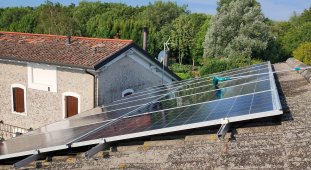
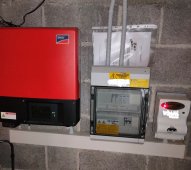
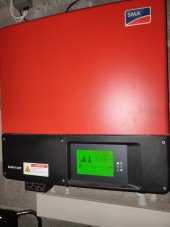
Today is really cloudy here... so not so much free energy! this system was installed in 2016, the picture of the solar panel is from August when we washed them after several month without rain.
Using the offgrid system only for the scooter is quite pricy and useless, instead I want to use this system to power up when needed also our Miele washing machine (boiling cotton 60°C takes around 1.5kWh) or the AC minisplit inverter to heat up the house instead of using the naphtha furnace/boiler primarily (in the countryside is still common or LPG furnace/boiler) because in winter we obviously have less sun hour and when the sun goes down my ongrid system is useless (typically after 4-5pm).
Last but not least in countryside we do not have aqueduct, so the only way to have water (drinkable obv) is via autoclave, if there is a power outage we have an Honda eu22i to power it up but it's not convinient to use, so in case of emergency I can use the offgrid system (the Inverter marked above have surge power of 7kW, the installed DAB Jet 132M have Pmax/surge: 1,5kW and Pn aroud 1.3kW mesured).
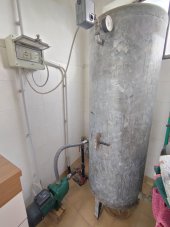
What I want to do:
I want to build up the system on the shed roof (50m^2 / 538sqf) that is near the garages, laundry, AC and autoclave; all the battery/inverter/mppt installed in a dedicated space inside the garage that I can isolate better for winter/summer cilmate.
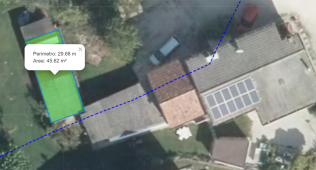 the blue line marks a landscape constraint, so I can not use my roof below the blue line (southeast) without many permission.
the blue line marks a landscape constraint, so I can not use my roof below the blue line (southeast) without many permission.
I want that this system can be upgraded easly by the year adding more used solar panel and more diy battery in the future (that's why i choose separated MPPT-inverter instead of a All In One solution).
The 4 solar panel are going to be plugged in 2s2p and installed flat on the metal roof surface (less expensive) so I can add 4 more panel 2s2p to reach maximum value of the MPPT before I need to buy another one.
Problem:
My biggest problem is the diy battery, I'm sure about the 8S EVE LF280K and the Jk B2A8S20P-HEAT BMS (because here is common -0°C/32F inside the garage and I really like the integrated feature.
But before concerning about how I can install the heating element/enclousure/... I have to deal with the dealer choice: I prefer buying from dealer on Alibaba that has an european warehouse so I can de more calm about DDP, shipping time and etc.
I'm following the thread about GradeB EVE but for my needs I don't think that a GradeA battery can be really a must have, I obv want the same capacity as payed and the same internal resistance as possible... but what do you think? .
I will update this thread about the installations for this project, but if for you I can do something better/different let me know! I'm here to share an learn
Francesco
I'm building my first offgrid system here in Italy trying to mantain at the lowest all the cost without sacrifice security and quality overall.
What I have:
- 4 jinko solar JKM240P-60 240W (55€ -54$ each)
- 1 EPever MPPT XTRA4415N (200€ - 197$)
What I have to buy:
- 24V 3500W Edecoa inverter (~390€ - 384$)
- 24V 280Ah DIY battery+BMS (in evaluation)
- Test equipement to test the cell (to be defined)
Define the context :
in my house I have already an ongrid 3Kw sistem without battery (legally I cannot touch the system or modify it, I have to do many paper and spend lot of time to do it... Italian burocracy...) but with the electricity cost increasing now it's pricy charging my "125cc" electric scooter that I use to ride home-work and I need to charge it up every 3-4 days (it takes 3kWh), not so much but I can only charge it during night paying 4 times the price for kWh that Enel (the Italian power distributor) pays me for 1kWh sent ongrid (I pay 0.4-0.5kWh and they pay me 0.1kWh circa).
This is my existing system: 12 panel 250W Solarworld, SMA Sunny Boy 3000LT-21.



Today is really cloudy here... so not so much free energy! this system was installed in 2016, the picture of the solar panel is from August when we washed them after several month without rain.
Using the offgrid system only for the scooter is quite pricy and useless, instead I want to use this system to power up when needed also our Miele washing machine (boiling cotton 60°C takes around 1.5kWh) or the AC minisplit inverter to heat up the house instead of using the naphtha furnace/boiler primarily (in the countryside is still common or LPG furnace/boiler) because in winter we obviously have less sun hour and when the sun goes down my ongrid system is useless (typically after 4-5pm).
Last but not least in countryside we do not have aqueduct, so the only way to have water (drinkable obv) is via autoclave, if there is a power outage we have an Honda eu22i to power it up but it's not convinient to use, so in case of emergency I can use the offgrid system (the Inverter marked above have surge power of 7kW, the installed DAB Jet 132M have Pmax/surge: 1,5kW and Pn aroud 1.3kW mesured).

What I want to do:
I want to build up the system on the shed roof (50m^2 / 538sqf) that is near the garages, laundry, AC and autoclave; all the battery/inverter/mppt installed in a dedicated space inside the garage that I can isolate better for winter/summer cilmate.
 the blue line marks a landscape constraint, so I can not use my roof below the blue line (southeast) without many permission.
the blue line marks a landscape constraint, so I can not use my roof below the blue line (southeast) without many permission.I want that this system can be upgraded easly by the year adding more used solar panel and more diy battery in the future (that's why i choose separated MPPT-inverter instead of a All In One solution).
The 4 solar panel are going to be plugged in 2s2p and installed flat on the metal roof surface (less expensive) so I can add 4 more panel 2s2p to reach maximum value of the MPPT before I need to buy another one.
Problem:
My biggest problem is the diy battery, I'm sure about the 8S EVE LF280K and the Jk B2A8S20P-HEAT BMS (because here is common -0°C/32F inside the garage and I really like the integrated feature.
But before concerning about how I can install the heating element/enclousure/... I have to deal with the dealer choice: I prefer buying from dealer on Alibaba that has an european warehouse so I can de more calm about DDP, shipping time and etc.
I'm following the thread about GradeB EVE but for my needs I don't think that a GradeA battery can be really a must have, I obv want the same capacity as payed and the same internal resistance as possible... but what do you think? .
I will update this thread about the installations for this project, but if for you I can do something better/different let me know! I'm here to share an learn
Francesco
Last edited:




